Cheese is a delicious staple food that comes in numerous delicious varieties of all shapes and sizes. Sometimes it's challenging to sus out just how you're supposed to eat the cheese you want. Take brie cheese with a soft rind. Is the rind edible, or should you best throw it out with the trash? Well, we here at KitchenSeer have researched this delicacy and written about it down below.
The rind of brie cheese is fully edible and adds to the cheese's flavor. The rind adds a subtle earthy flavor to the cheese that compliments the flavor of the paste. It's this combination of rind and cheese that gives brie its distinct and well-appreciated flavor. The rind isn't a requirement for enjoying brie, but it adds to the experience.
You likely have a lot of questions about the rind of your favorite cheese. Many steps go into the making of any good cheese, including the rind. Continue reading to learn more about brie cheese, its rind, and how embracing it can enhance your experience.

What's in brie cheese and its rind?
Brie cheese is a light buttery cheese with a creamy texture. The cheese was first made in the cellars of homes in France. It's gone on to enjoy success around the world. Cheesemakers make standard brie with cow's milk; however, goat milk variants are available as well.
Brie has an incredibly soft texture to it, sometimes even a bit runny. Additional enzymes and rennet are added to the cheese to make it curdle.
A yeast culture is then added to help facilitate the growth of the bloomy rind. This rind is called bloomy because it blooms out from the center of the cheese and is then patted down into the smooth layer of rind that comes to cover the brie once it's finished being made.

What Makes Up The Outer Layer Of Brie Cheese?
Brie has a well-known white downy rind that covers its entire exterior. Penicillium candidum (a fluffy white mold that gives the rind its distinct appearance) and geotrichum candidum (a squiggly cream-colored fungus) make up the rind of brie cheese. While words like mold and fungus might put you off of eating, both penicillium candidum and geotrichum candidum are completely edible.
Many consider the rind to be part of the overall flavor profile of brie. The enzymes in the rind provide a naturally tender flavor on their own and complement the cheese. Enzymes found in the rind soften up the brie cheese as well for an even better texture.
What a brie rind should not be
With that said, there are certainly cases in which a brie rind has gone bad. If you notice any of these circumstances with your cheese rind, don't purchase or consume it:
- A rind that has turned red or brown or becomes sticky or cracked. A brie rind doesn't have to be uniformly white, but there is a clear difference between mottled and solid brown. Ask your grocer or expert if you're unsure about the cheese you're looking to purchase.
- A rind that, when opened at room temperature, separates off from the interior cheese. This signifies something wrong with the production of the cheese.
- A thick, papery, or excessively chewy rind. The rind and the cheese are texturally different, but not to this extent. The rind should be firm but not require excessive chewing on the part of the partaker. Likewise, if the cheese itself is firm, you have a bad brie.
- If your cheese or rind has the smell or taste of ammonia, give it a hard pass. That's a signifier of a bad chemical reaction happening in your cheese.
Do you eat the rind of brie cheese?
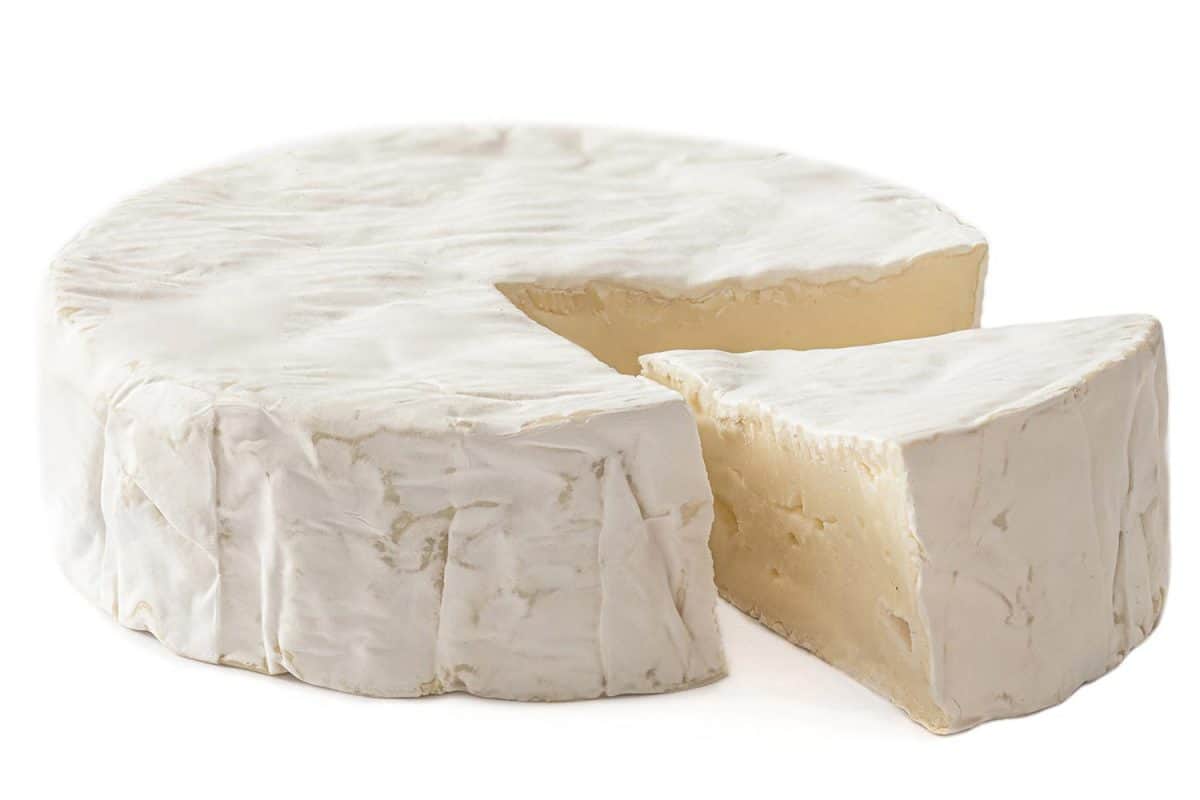
While it's ultimately up to you what foods you eat, there are many reasons why many proponents of brie cheese include the rind. Firstly is the texture. While brie is known for its pillowy and sometimes runny soft insides, the rind gives a bit of firmness that compliments this softness well. The rind of a good brie cheese properly straddles the line of providing some substance without becoming too chewy or hard.
The rind is also where a good portion of brie's flavor comes in. While the inner cheese should never be tasteless (this is a sign of poor brie), the rind is where the strongest flavors reside. The penicillium found in the rind will give you a range of flavors from sweeter to earthy, especially as the cheese ages. Even on newer cheeses, however, the additional flavor profile of the rind goes a long way. Unless it truly upsets you to do so, eating of the rind is recommended.
If you are in a social setting and do not plan to eat the rind, take it with you on your plate. It's fairly bad manners to scoop out the center of brie cheese and leave the rind behind for others. If you feel this is wasteful, perhaps stick to other cheeses when eating with friends or at gatherings.
Read now on KitchenSeer: Is a cheese board a starter or a dessert?
How Do Your Properly Eat Brie Cheese?
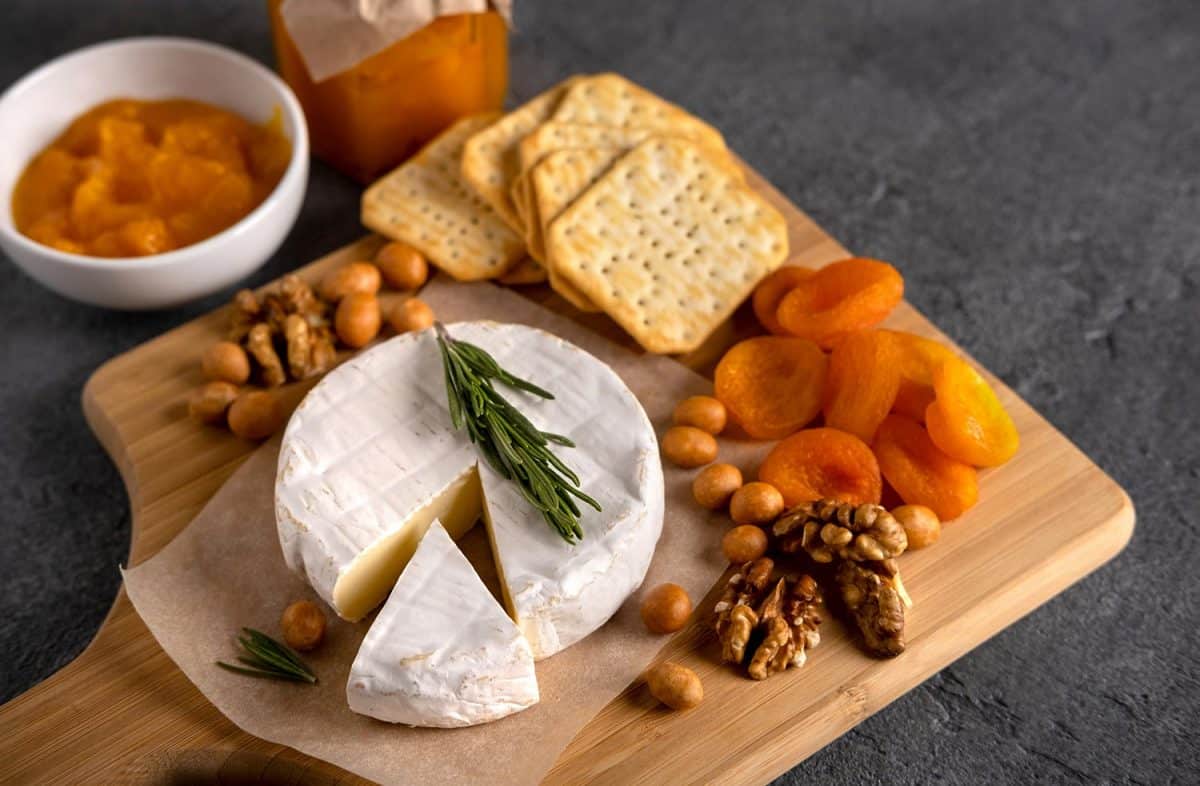
One of the best things about brie is its versatility. You can cook with it, making everything from delicious sauces to sandwiches and pastries. It also is well served on cheese plates and raw. There are many ways to go about eating brie, but a few factors come into play if you want to eat it like a Parisian.
Temperature
One of the first keys to enjoying brie is the temperature. As with most cheeses, room temperature is best as this will allow for the aromas and delicacies found in the cheese to mingle the best. Eating cold brie right out of the fridge will severely hinder its taste and consistency, leaving you often rubbery and flavorless cheese.
A simple way to prep your brie is to let it sit on your countertop for about an hour. This will give you the right temperature and consistency for the best brie. If you really want a gooey inside center to your brie, pop it in the oven for about five minutes at about 350 degrees Fahrenheit or the microwave for one minute. This isn't the most traditional way of eating brie, but it makes for quite the tasty treat.
The rind
As previously mentioned, all proper French folk, and cheese connoisseurs in general, will never eschew the rind of the brie. Leave it on while heating, while thawing, and while consuming for the ultimate brie experience.
The shape of your cheese
When serving and cutting your brie, make sure you don't cut off the tip of your wedge. The center of the brie is considered the tastiest, so cutting off the tip of your wedge is considered quite rude.
If you've purchased your brie in a wedge, cut and serve it in smaller, thinner wedges. If you buy it in a full round, slice it in half, and then continue to form small wedges. This will allow everyone a piece of the tasty center.
Read now on KitchenSeer: Can you microwave brie cheese?
Do You Leave The Rind On Brie Cheese When Baking?
The previous questions have all been great for answering how to eat brie cheese as is or with crackers. But what about using it in baking? Baked brie becomes warm and gooey, and you can infuse it with a range of other ingredients to form delicious dishes. Keeping the rind on when baking provides the infusion of flavor we discussed previously, both while cooking and in the end result.
There is also the added benefit of the rind of your brie, helping keep the structural integrity of your brie together while baking. Brie is already a quite soft cheese, but when baked, it can become quite gooey. The rind will serve as an easy way to keep it together during the baking process. The rind will save you a dirty dish and also give you more delicious cheese.
In Closing
As with any other food, the way you consume brie is ultimately up to you. If you truly find an otherwise enjoyable experience hindered by the rind, go without. Make sure to mind your manners in social settings, and consider what your guests might want, but other than that, there is no true rule. While the rind of brie has many benefits, what matters the most is your happiness and comfort with the food you put in your body.

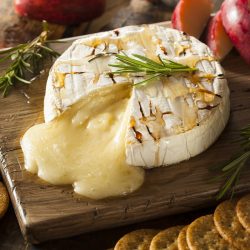

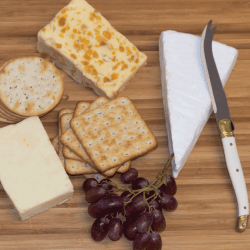
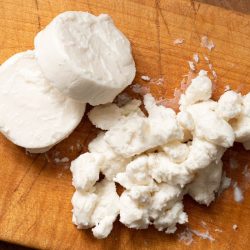
![set of cheese knives on a round wooden board. 14 Types Of Cheese Knives [Inc. What Cheese They're Good For And Why]](https://kitchenseer.com/wp-content/uploads/2021/07/set-of-cheese-knives-on-a-round-wooden-board.-14-Types-Of-Cheese-Knives-Inc.-What-Cheese-Theyre-Good-For-And-Why-250x250.png)
![Aging old cheese in the factory, Does Cheese Always Age Well Or Does It Go Bad Eventually? [According To Type Of Cheese]](https://kitchenseer.com/wp-content/uploads/2021/09/Aging-old-cheese-in-the-factory-250x250.jpg)